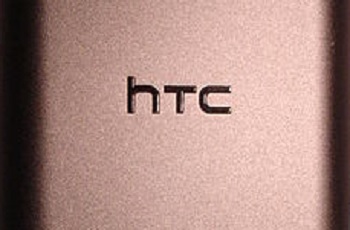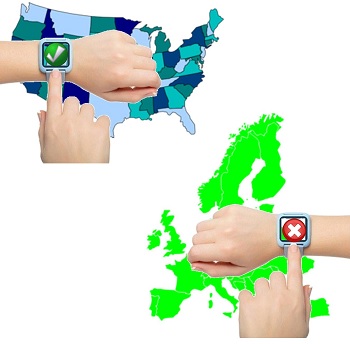Denny |
December 17, 2014
The device is still expected to be something that will be worn on the wrist, though it is not going to be a smartwatch.
Ever since it was revealed that HTC has been working on a wearable technology device, the assumption has been that it would be unveiling some form of smartwatch at CES, but it doesn’t look like that will be the case, at all.
Speculations have been swirling for some time now, but it still looks as though the wearables will be wrist-worn.
According to a spokesperson from HTC, the first piece of wearable technology from the smartphone manufacturer based in Taiwan is going to be launched within the first quarter of next year. That said, the spokesperson made it clear that regardless of all of the speculations that would suggest that this mobile device is going to be released in the form of a smartwatch, that is not going to be the case.
HTC reiterated its intentions to create a wearable technology device but that it was taking longer than expected.
 At that time, the device had been due to be launched, but Jason Mackenzie, the head of HTC America, explained that it simply wasn’t ready and so the unveiling was, therefore, being delayed. Now, HTC has said that in January, when the CES takes place, the company will be ready with its new wearables to be seen by the public for the first time.
At that time, the device had been due to be launched, but Jason Mackenzie, the head of HTC America, explained that it simply wasn’t ready and so the unveiling was, therefore, being delayed. Now, HTC has said that in January, when the CES takes place, the company will be ready with its new wearables to be seen by the public for the first time.
The spokesperson also explained that this new mobile device is going to be “very different from anything currently on the market.” That said, many technology companies have said that about their own devices which have only proven to be a disappointment in terms of their lack of originality when compared to other gadgets that are already on the market shelves. The tech world will need to see for itself whether or not HTC is able to stand out in a rapidly growing category where it is becoming increasingly different to do anything new.
HTC has also revealed that it will be working “closely with other companies who have done significant work in developing apps for activities such as fitness.” This suggests that the wearable technology device may be comparable to a fitness band as opposed to the smartwatch design that had previously been expected.
A new report issued by Forrester Research has indicated that there will be a tripling of wearables users in 2015.
According to Forrester Research in a new report that they have recently released, the number of people who will be using wearable technology is going to triple throughout next year, when compared to this year’s figures.
This will, said the report, be greatly driven by the upcoming release of the Apple Watch, early next year.
The research firm has predicted that the Apple Watch, alone, will draw an additional 10 million users to the wearable technology category. This represents a more rapid growth rate than has been issued by a number of other forecasts, which feel as though the first wave of chunky, unfashionable, and just plain ugly prototypes and early generations of devices will have put many consumers off the idea for some time. But this new research indicates that next year will be a breakout for this trend.
That said, the interest in wearable technology was found to be greatly different between the U.S. and Europe.
 Polling data that was used in this Forrester Research study involved the participation of thousands of consumers throughout Europe and the United States. Among Americans 45 percent said that they could imagine themselves using wearables. That said, among Europeans, only 32 percent said that they would want to wear those devices.
Polling data that was used in this Forrester Research study involved the participation of thousands of consumers throughout Europe and the United States. Among Americans 45 percent said that they could imagine themselves using wearables. That said, among Europeans, only 32 percent said that they would want to wear those devices.
That said, within the wearables category, there are areas that consumers can picture themselves using more than others. For example, health monitors and smartwatches were among the items that consumers said that they were more likely to wear than other devices such as smart glasses. People seemed more willing to wear something on their wrists, followed by those that clip onto clothing. Lastly was those that were to be worn on the ear or face.
Even in the United States, there was a difference from one region to the next among the various categories of wearable technology. That said, in every area there were people who were willing to try everything from the aforementioned devices to smart jewelry, but even tech enhanced contact lenses and tattoos had some willing adopters.
 At that time, the device had been due to be launched, but Jason Mackenzie, the head of HTC America, explained that it simply wasn’t ready and so the unveiling was, therefore, being delayed. Now, HTC has said that in January, when the CES takes place, the company will be ready with its new wearables to be seen by the public for the first time.
At that time, the device had been due to be launched, but Jason Mackenzie, the head of HTC America, explained that it simply wasn’t ready and so the unveiling was, therefore, being delayed. Now, HTC has said that in January, when the CES takes place, the company will be ready with its new wearables to be seen by the public for the first time.
 Polling data that was used in this Forrester Research study involved the participation of thousands of consumers throughout Europe and the United States. Among Americans 45 percent said that they could imagine themselves using
Polling data that was used in this Forrester Research study involved the participation of thousands of consumers throughout Europe and the United States. Among Americans 45 percent said that they could imagine themselves using 